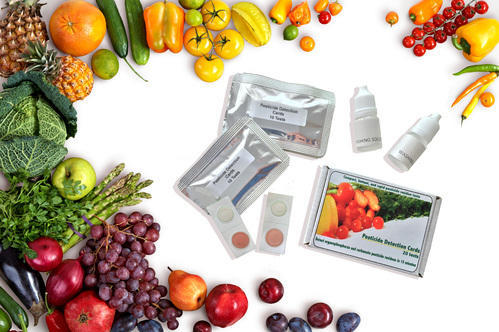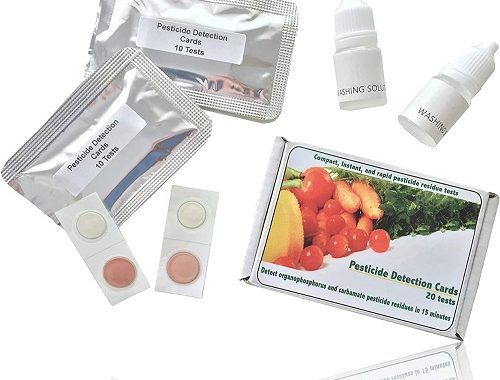Testing for Pesticides in Your Home: A Comprehensive Guide
If you’re concerned about the presence of pesticides in your home, you’re not alone. Pesticides are commonly used to eliminate pests, but their residue can be a cause for worry. This guide will walk you through how to test for pesticides at home and provide peace of mind.
Understanding Pesticides and the Need for Testing
Pesticides are chemicals designed to control or eradicate unwanted pests like insects, rodents, and weeds. While they serve a purpose, the residue left behind can be harmful if it accumulates indoors. Pesticides can find their way into your home through various means.
- Contaminated Food: Pesticide residues on fruits, vegetables, and other food items can enter your home’s food chain.
- Indoor Pest Control: If pesticides are used indoors to combat pests, they may leave traces on surfaces.
- Exterior Exposure: Outdoor use of pesticides can lead to tracked-in residue on shoes and pets.
- Commercial Products: Household cleaning and pest control products often contain pesticides.
Testing for pesticides is crucial, especially if you have young children or pets. The EPA sets guidelines for safe pesticide exposure levels, and regular testing can help ensure compliance.
How to Test for Pesticides in Your Home
1. Home Pesticide Test Kits
Home pesticide test kits are readily available and offer a convenient way to test your home for pesticide residues. These kits usually include test strips or swabs that you can use to collect samples from surfaces in your home, such as countertops or floors. Follow the kit’s instructions carefully to obtain accurate results.
2. Laboratory Testing
For a more comprehensive analysis, consider sending samples to a certified laboratory. This approach is particularly useful if you suspect a specific pesticide or want a thorough examination of your home. Some laboratories can test various samples, including air, water, dust, and soil.
3. Consult a Professional
If you’re unsure about the testing process or suspect heavy pesticide contamination, it’s advisable to consult a professional environmental testing company. They have the expertise to collect samples effectively and interpret the results accurately.
How To Test For Chlorine In Water At Home
Interpreting the Results
Once you’ve collected and analyzed your samples, you’ll receive results indicating the presence of pesticides, if any. It’s important to understand these results:
- Presence of Pesticides: If pesticides are detected, take note of the specific pesticides identified.
- Concentration Levels: Results will reveal the concentration levels of pesticides. Compare these levels to the EPA’s safety guidelines to assess potential health risks.
- Location: Determine where pesticides are most prevalent within your home. This can help you identify the source of contamination.
What to Do if Pesticides Are Detected
If your testing reveals the presence of pesticides in your home, here are some steps to consider:
- Identify the source: Try to determine how pesticides entered your home. Address this source to prevent further contamination.
- Consult a professional: Seek advice from an expert in environmental testing or pest control to assess the severity of the issue.
- Safe Cleanup: If pesticides are present at unsafe levels, consult with professionals for proper cleanup. Follow safety guidelines and consider temporary relocation.
- Prevention: Implement pest control strategies that minimize pesticide use and focus on prevention, such as sealing entry points for pests.
Safe and Healthy Living Spaces
Testing for pesticides in your home is an essential step toward ensuring a safe and healthy living environment for you and your loved ones. By understanding the testing process and interpreting the results, you can take appropriate action to address any pesticide-related concerns, making your home a more comfortable place to live.
Remember, your health and well-being matter, and taking steps to maintain a pesticide-free home contributes to a healthier lifestyle.
Stay informed, stay safe, and enjoy a pesticide-free living space.
Common Questions About Testing for Pesticides in the Home
Why is testing for pesticides important?
Testing for pesticides is crucial because it helps you identify and address potential health risks associated with pesticide residues in your home. It ensures that your living space is safe for you and your family.
How often should I test for pesticides in my home?
The frequency of testing depends on various factors, including your location, pesticide usage, and individual concerns. For many households, annual testing is sufficient. However, if you suspect pesticide exposure, it’s advisable to conduct testing immediately.
Can I test for pesticides in my food and drinking water?
Yes, you can. Pesticide residues in food and water can be tested using specific kits or by sending samples to a certified laboratory. It’s an effective way to ensure that the products you consume are safe.
Are there safe alternatives to pesticides for pest control?
Yes, several safe and eco-friendly pest control methods can be used instead of traditional pesticides. These include integrated pest management (IPM) strategies, which focus on prevention, sanitation, and natural pest control methods.
How can I reduce pesticide exposure in my home?
Reducing pesticide exposure can be achieved by implementing pest prevention measures, such as sealing entry points, using traps, and maintaining proper hygiene. Opt for non-toxic or less-toxic pest control alternatives whenever possible.
What are the potential health risks associated with pesticide exposure?
Health risks from pesticide exposure can range from mild irritation to more severe issues, depending on the type and concentration of pesticides. Symptoms may include skin rashes, respiratory problems, and, in extreme cases, poisoning. Minimizing exposure is essential to preventing health concerns.
How can I tell if I have pesticide contamination in my home?
Signs of pesticide contamination may include unusual odors, dead or dying insects, pests that seem unaffected by common pest control methods, or unexplained health issues. However, it’s best to confirm contamination through testing.
Can I use at-home pesticide test kits, or should I hire a professional for testing?
At-home pesticide test kits are suitable for initial screenings, but for accurate and detailed results, especially in the case of potential contamination, it’s advisable to hire a professional environmental testing service.
Are children and pets more vulnerable to pesticide exposure?
Yes, children and pets are generally more vulnerable to pesticide exposure due to their smaller size and faster metabolic rates. It’s crucial to maintain a pesticide-free environment, especially in areas accessible to children and pets.
Can pesticides be tracked into the home from outdoors?
Yes, pesticides can be tracked indoors from treated outdoor areas on shoes, clothing, or pet fur. Regular cleaning and removal of outdoor shoes at the entryway can help prevent this.
What should I do if pesticide contamination is confirmed in my home?
If pesticide contamination is confirmed, it’s important to consult with a professional to determine the extent of the issue and develop a remediation plan. Proper cleaning, ventilation, and eliminating the source of contamination are key steps.
How To Test Gold At Home With Toothpaste
Are organic or natural pesticides safer for home use?
Organic or natural pesticides can be less toxic than synthetic ones, but they are not without risks. Always follow usage instructions carefully and consider non-toxic pest control methods whenever possible.
Are there specific areas in my home where I should focus pesticide testing?
Areas where pesticides are commonly used, stored, or where pests are most frequently found should be a priority for testing. This includes kitchens, storage areas, and outdoor entry points.
How long does it take to receive results from a professional pesticide test?
The turnaround time for professional pesticide tests can vary depending on the type of test and the laboratory’s workload. It may take several days to a few weeks to receive results.
Promote A Healthier Home Environment
In a world where pesticides are commonly used, ensuring your home remains a pesticide-free haven is essential for your well-being. Testing for pesticides is a proactive step toward creating a healthier living space for you and your family. By following this guide, you can address any pesticide concerns and maintain a safe and comfortable home environment.
Conclusion
Testing for pesticides in your home is a critical step in safeguarding your health and well-being. Pesticides, whether from household use or environmental exposure, can have adverse effects on human health. By employing various testing methods and seeking professional guidance when necessary, you can identify and mitigate potential pesticide contamination. Regular testing, combined with safe storage and disposal practices, can help create a healthier and safer environment for you and your family. It’s essential to stay informed about potential sources of pesticide exposure and take proactive measures to reduce risks to your household.


